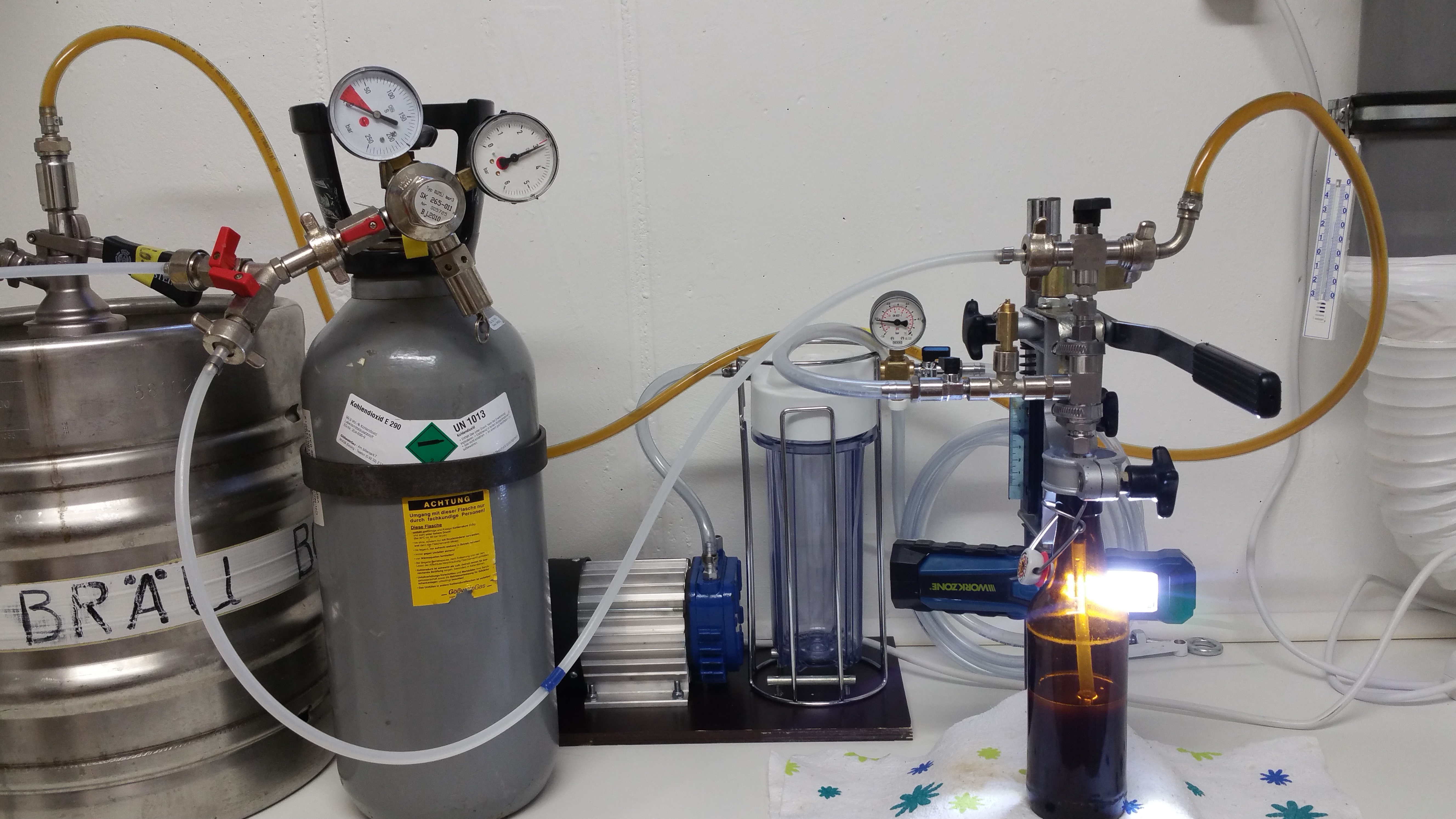Gthurner
Member
- Joined
- Mar 18, 2022
- Messages
- 22
- Reaction score
- 51
Cold-hopped beers have a strong tendency to lose flavor due to oxidation.
For these beers, I evacuated the kegs and bottles several times with the vacuum pump and purged them with CO2 before filling them with the beer. It's a lot of work, especially when filling small 0.33-liter bottles with the backpressure filler. However, after much experimentation, I have found that the best way to make a heavily hopped IPA last longer than 3 months is a very simple process:
You put the calculated amount of sugar in the bottle and then fill it to the brim with beer. You have to be willing to sacrifice a few drops when capping.
So my strategy for effectively reducing oxidation is to bottle ferment and strictly avoid the air space in the neck of the bottle.
Cheers

For these beers, I evacuated the kegs and bottles several times with the vacuum pump and purged them with CO2 before filling them with the beer. It's a lot of work, especially when filling small 0.33-liter bottles with the backpressure filler. However, after much experimentation, I have found that the best way to make a heavily hopped IPA last longer than 3 months is a very simple process:
You put the calculated amount of sugar in the bottle and then fill it to the brim with beer. You have to be willing to sacrifice a few drops when capping.
So my strategy for effectively reducing oxidation is to bottle ferment and strictly avoid the air space in the neck of the bottle.
Cheers








![Craft A Brew - Safale S-04 Dry Yeast - Fermentis - English Ale Dry Yeast - For English and American Ales and Hard Apple Ciders - Ingredients for Home Brewing - Beer Making Supplies - [1 Pack]](https://m.media-amazon.com/images/I/41fVGNh6JfL._SL500_.jpg)

















































